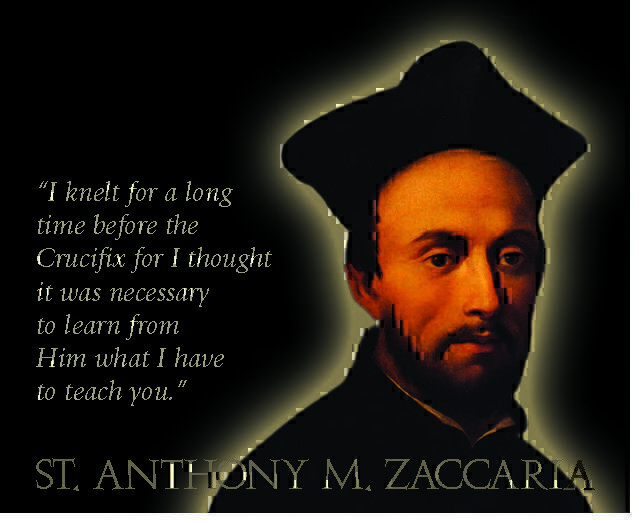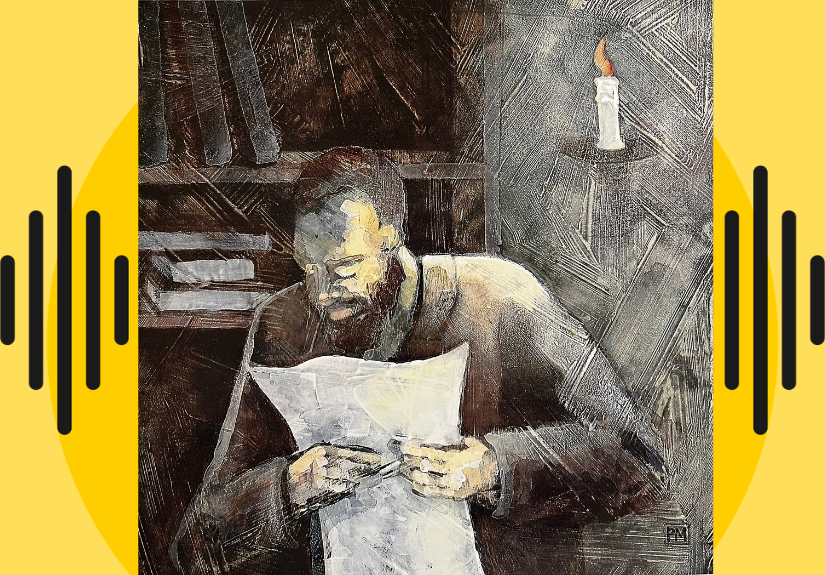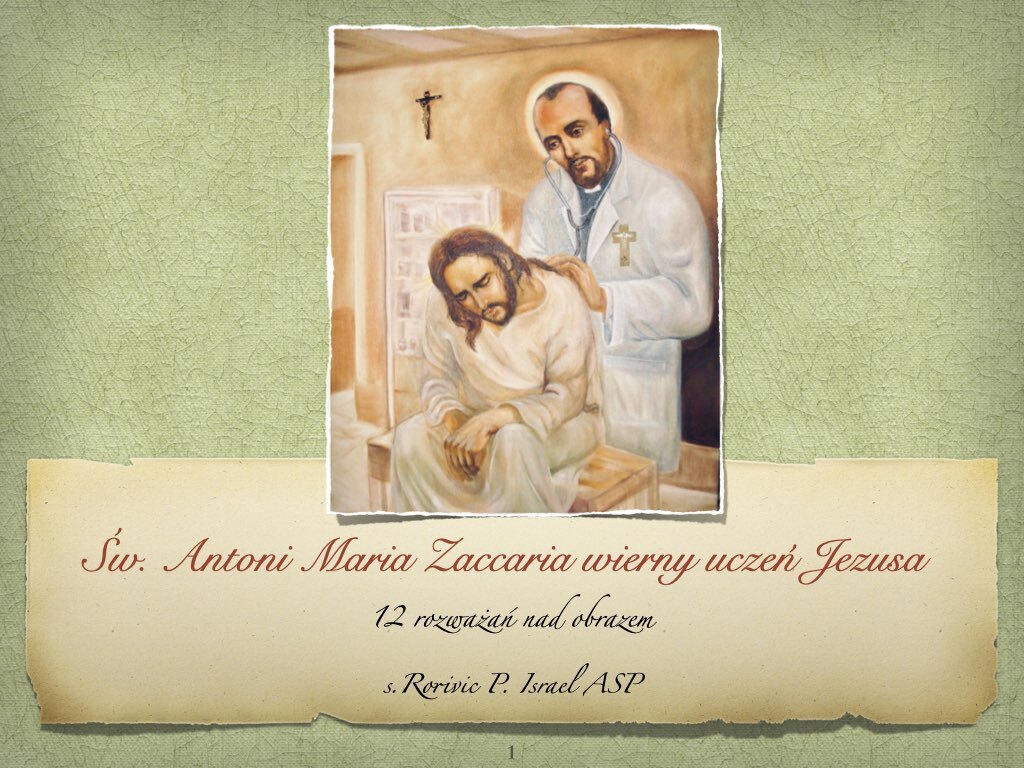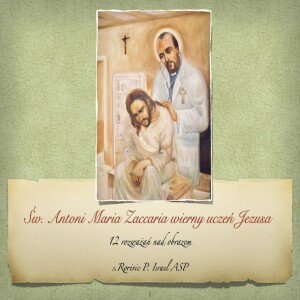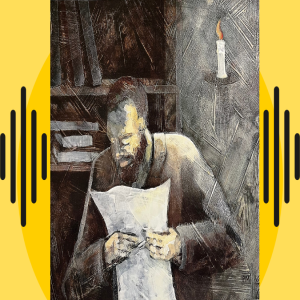About St. Anthony Mary Zaccaria
In the first half of the fifteenth century in Italy shone the luminous figure of Anthony Mary Zaccaria. This young saint, full of passion for God's love, was a great reformer of religious customs of the clergy and the Christian people. Above all, he was the founder of the Clerics Regular of St. Paul (Barnabites), the Angelic Sisters of St. Paul, and the Laity of St. Paul.
Anthony Mary Zaccaria, born in Cremona, Italy in 1502, was a student and graduate in medicine from the University of Padua; a doctor of body and soul in his native city; a fervent catechist and a zealous priest in Milan and elsewhere. For a decade his apostolate was characterized by an intense devotion to the Most Blessed Sacrament of the altar (he was the promoter of the Forty Hours Devotion), and by a passionate love of the cross and the crucified Christ (he instituted the ringing of bells on Friday afternoon to commemorate Christ's death). Anthony Mary was guided by an extraordinary zeal of St. Paul, chosen by him to be his master and model on earth, and his special patron in heaven. old,
Exhausted from his pastoral work, Anthony Mary died at only 36 years leaving behind admirable examples of penance and of spirituality.
In the novena here presented, his ascetic-mystic thought continuously emerges. This thought can be found in his six Sermons and eleven Letters, which remained as his testament and a mirror of his soul and his missionary call: in these writings resounds an unceasing appeal against vices, and toward holiness.
Cardinal Ratzinger wrote: "I have to say that the image of this saint is dear to me because he is one of the great figures of Catholic reform... an authentic man of God and of the Church, a man burning with zeal, a demanding forger of consciences, a true leader able to convert and lead others to good."
Like all the saints, Zaccaria is a figure of permanent relevance: an encounter with him symbolizes an invitation to return to a charism of a unique vocation, a return desired by the Second Vatican Council, as an indispensable element of true renewal. The Church venerates the saints and honors their images. Celebrating their names and their memory, she proclaims Christ's marvels in his servants and proposes to the faithful examples to imitate (Sacrosantum Concilium, 11).
The saints manifest the face and the presence of God in the world. They contribute to the spiritual life of the Church on earth, and form with us one mystical body. As friends and coheirs of Christ, they intercede for us. As our brothers and benefactors, they teach us the way to reach heaven. (Lumen Gentium, 49-50)
Anthony Mary Zaccaria merits to be known and followed in his teachings: he counts among the category of priests, who in the course of centuries, have left a splendid example of holiness. As a spiritual master, he continues to spread and proclaim the Word of God and to teach the "sublime wisdom of Jesus Christ" (Liturgy of July 5)
Bishop Andrea M. Erba, CRSP
Bishop of Velletri-Segni, Rome, 15 November 2008 | Solemnity of Mother of Divine Providence
O Św. Antonim Marii Zaccarii
W pierwszej połowie XVI wieku we Włoszech zajaśniała świetlista postać Antoniego Marii Zaccarii. Ten młody święty, pełen pasji i miłości Bożej, był wielkim reformatorem życia religijnego duchowieństwa i ludu chrześcijańskiego. Był przede wszystkim założycielem Zakonu Księży Regularnych św. Pawła zwanych Barnabitami, Sióstr Anielanek św. Pawła i Laikatu św. Pawła.
Antoni Maria Zaccaria, urodzony w Cremonie we Włoszech w 1502 r., był studentem i absolwentem medycyny na Uniwersytecie w Padwie: lekarzem ciała i duszy w swoim rodzinnym mieście, żarliwym katechetą, gorliwym kapłanem w Mediolanie i nie tylko. Przez dekadę, jego apostolat charakteryzowało intensywne nabożeństwo do Najświętszego Sakramentu (był promotorem czterdziestogodzinnego nabożeństwa) oraz żarliwa miłość do Krzyża i Chrystusa ukrzyżowanego (ustanowił bicie dzwonów w piątek o godzinie 15-tej na pamiątkę śmierci Jezusa). Antonim Marią kierowała niezwykła gorliwość św. Pawła, wybranego przez niego na swego mistrza i wzór na ziemi, a szczególnego patrona w niebie. Wyczerpany pracą duszpasterską Antoni Maria umiera w wieku zaledwie 36 lat, pozostawiając po sobie godne podziwu przykłady pokuty i duchowości.
Joseph Kardynał Ratzinger napisał: „Muszę też przyznać, że postać tego Świętego Antoniego Marii Zaccarii jest mi szczególnie droga, gdyż pozostaje on jedną z wielkich osobowości związanych z reformą katolicką XVI wieku (…) autentycznym, żarliwym w wierze człowiekiem Boga i Kościoła, wymagającym formatorem sumień, przewodnikiem zdolnym pociągnąć innych ku dobru i nawracać” (Antonio Montonati, Rozpalił płomień wiary, s.14,15).
Podobnie jak wszyscy święci, Zaccaria jest postacią o nieprzemijającej aktualności. Spotkanie z Nim symbolizuje zaproszenie do upragnionego powrotu do wyjątkowego charyzmatu powołania, jako nieodzownego elementu prawdziwej odnowy ogłoszonym przez Sobór Watykański II. Kościół czci świętych i czci ich wizerunki. Czcząc ich imiona i pamięć, głosi cuda Chrystusa w Jego sługach i proponuje wiernym przykłady do naśladowania (Sacrosantum Concilium, 11). Święci ukazują oblicze i obecność Boga w świecie. To oni przyczyniają się do duchowego życia Kościoła na ziemi i tworzą z nami jedno mistyczne ciało. Jako przyjaciele i współdziedzice Chrystusa wstawiają się za nami. Jako nasi bracia i dobroczyńcy, uczą nas drogi do nieba (Lumen Gentium, 49-50).
Antoni Maria Zaccaria zasługuje na to, by być znanym i naśladowanym w jego nauczaniu: zalicza się do kategorii kapłanów, którzy na przestrzeni wieków pozostawili wspaniały przykład świętości. Jako mistrz duchowy nadal rozpowszechnia i głosi Słowo Boże oraz naucza o „wzniosłej mądrości Jezusa Chrystusa” (liturgia 5 lipca)."
Biskup Andrea M. Erba CRSP
Biskup Andrea M. Erba, CRSP
Biskup Velletri Segni,
Rzym, 15 listopada 2008
Uroczystość Matki Boskiej Opatrzności






